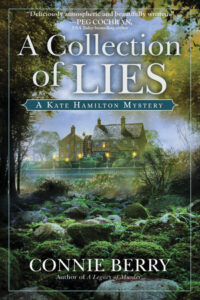Historical mystery with its portrayal of life in another time and place has long been one of the most popular subgenres of crime fiction. From ancient Rome and medieval monasteries to the pre-Civil War South, the foggy streets of Victorian London, and the trenches of WW1, readers like me relish the sense of time travel. But is it the glimpse of lost worlds that captures our imaginations, or is there something more meaningful at work? Is history only for historicals? I don’t believe it is.
I’d like to suggest five ways to use the past in plotting your contemporary crime fiction:
- Construct Characters with Complex Personal Histories
All stories begin in medias res because every character has a personal history, and that personal history influences how he or she will behave in the current crisis. What are her irrational fears, and how were they formed? What past traumas impact his outlook on life and therefore affect his behavior today? What secrets must she hide? What internal conflict will hinder your protagonist and cause him to make mistakes? And speaking of mistakes, what past failures must your main character overcome in order to succeed this time? All this is called backstory, and it’s a brilliant way to add psychological depth to your characters. Readers want to know what makes a character tick. I’m not talking about the dreaded info dump. I am talking about creating three-dimensional characters with fears, flaws, foibles, and failings like real people. You, the author, give readers just enough backstory, parceled out bit by bit, to help them connect the dots.
Ann Cleeve’s beloved DCI Vera Stanhope, a loner who eats and drinks too much, is the survivor of a bleak and unloving childhood. Tana French’s retired Chicago cop, Cal Hooper, fresh from a divorce and a traumatic shooting incident, hopes to find peace in a remote Irish village. Good luck with that. Matt Coyle’s private investigator Rick Cayhill battles CTE, a potentially fatal brain disorder that causes moments of confusion and uncontrolled rage.
Your characters don’t have to be irretrievably broken, damaged, or morally corrupt (although that kind of protagonist is increasingly popular, especially in thrillers), but their past histories should inform the way they operate and therefore drive your plots.
- Create Drama and Emotion with the Power of Our Collective Past
Backstory affects individuals. History, our collective past, affects everyone. Donald Maass explains it this way: “Backstory has shaped a character. The past has shaped all of society…. Backstory has a cure. The past has none. Backstory can be overcome. The past cannot be corrected, one can only—eventually—learn to endure or transcend its effects.” (Unboxed, “Back Story Versus the Past, Feb 2, 2022)
Writers of historicals have the advantage of using history’s inherent drama by setting their novels in the middle of conflict—the burning of Rome, the Crusades, the Black Death that claimed at least thirty percent of Europe’s population, the French Revolution, the Opium Wars, Nazi Germany. Writers of contemporary crime fiction (with notable exceptions—Nine Eleven, COVID, Ukraine) don’t have similar options. But we do have the power of our shared history to draw upon—the after-effects of the Viet Nam War, for example, or the lingering shadow of the Jim Crow South. Writers of contemporary crime fiction can use the power of our collective past by building stories set against a backdrop of social change, injustice and oppression, racism and sexism, generational family secrets, former attitudes towards mental illness and disabilities, natural disasters, wars, and terrorism. A character doesn’t need to have personally experienced a traumatic or life-changing event to be impacted by it.
Gillian Flynn’s debut novel, Sharp Objects, sets an investigation into the murder of a teen-age girl against attitudes toward mental illness. In Kellye Garrett’s Like A Sister, the murder of a reality-TV star reveals society’s perceptions of Black women.
In these books and others, the memories of our collective past are an integral element of the plot and a rich source of themes such as good versus evil, the power of love, betrayal and redemption, the search for justice, jealousy and revenge, heroism, hope, the search for God or a higher purpose, coming of age, the circle of life.
- Craft a Dazzling Prologue
Prologues have been called “superfluous,” “tedious info-dumps,” and “a bait-and-switch technique.” Agents and editors, we’re told, hate them. But when done well, a prologue ushers the reader into the story, setting the stage for subsequent events. And that happens most effectively in my opinion when the prologue takes place in the past, whether distant or recent.
Chapter one of Harry Potter and the Sorcerer’s Stone is a cleverly disguised prologue, showing a pivotal event in the past. Without it, readers would miss the context of the story. Police procedurals like Elizabeth George’s Lynley novels often begin with a prologue showing the discovery of a body by characters only tangentially connected to the main plot. We don’t see them again and usually don’t need to. Prologues such as the one in Into the Woods by Tana French dramatize upfront a pivotal moment in the past rather than interrupting the flow of the story later with a flashback or memory. In the prologue to A Running Grave by Robert Galbraith, excerpts from letters, emails, and interviews over a five-year period foreshadow the main story, create suspense, and establish the stakes.
A well-written prologue raises questions that propel the plot forward because what happened before chapter one lies simmering beneath the surface of things. “The past,” as William Faulkner famously said, “is never dead. It isn’t even past.”
- Connect Past and Present with Intriguing Dual Timelines
Telling a story through dual timelines is a narrative device well suited to crimes with long tails in the past. Unless you’re writing about random killings or motiveless crimes—and where’s the fun in that?—the discovery of a body isn’t really the inciting event. Yes, it kicks off the investigation, but a murder with malice aforethought is the aftermath of a story that began much earlier.
Christopher Fowler’s Full Dark House is the story of the first and last cases of Arthur Bryant and John May, two cranky, elderly detectives recruited during the Blitz for London’s Peculiar Crimes Unit. When Bryant is killed in a present-day bombing, May finds clues to the identity of his killer in his old partner’s notes of their first case. The Moonflower Murders by Anthony Horowitz is a “murder mystery within a murder mystery,” as former editor Susan Ryeland investigates the disappearance of a young woman possibly related to an eight-year-old murder dramatized in a novel Ryeland herself edited. In my own debut novel, A Dream of Death, a murder on a small Hebridean island recreates an infamous murder in island history. American antiques expert Kate Hamilton finds clues in a novel written in the form of a diary.
Both timelines must be equally compelling or the reader will skim through one to get back to the other. But whether told in “real time” or by using the device of written notes, a book, a diary, or a memory related by one of the characters, the power of a dual timeline lies in the gradually revealed connections between the two. “What you reveal in one timeline shows [the reader] a truth in the other…. Cause and effect.” (“Writing Dual Timelines with Katie Khan,” The Novelry). The connections become increasingly enlightening until at the end, they intersect and the reader understands they’ve been in on the secret all along.
- Captivate Readers with a Breathtaking Plot Twist
Plots twists, something the reader believes that turns out to be false, are the bread and butter of crime fiction. Readers love having their expectations overturned, and including a bit of history in a contemporary crime novel is a great way to tee up a twist. People aren’t always who and what they purport to be. Today, in the age of computers and databases, getting away with fraud and deception long-term is all but impossible. Everything about us in documented on some computer database somewhere. Not so in the past. Without easy ways of checking, people could tell lies and get away with it. My own grandmother shaved a couple of years off her age every time the census-taker came around. She’d be appalled to know I found the online census records. She’d be even more appalled to know I discovered a marriage she’d kept hidden for decades—and another marriage that never legally existed. Yup—she was a character.
Innocent Blood by P.D. James is the story of an adopted woman determined to trace her biological parents. The words little does she know come to mind here. Even so, the twist halfway through the book made international best-selling crime writer Sophie Hannah, “leap up” from her sun-lounger “and yell at random holiday makers that they needed to read this book urgently.”
In Kate Morton’s The Secret Keeper, a young girl witnesses her mother murdering a stranger. Years later, the slow unravelling of the truth includes a masterful double twist on false perceptions about truth and identity.
Secrets from the past, like my grandmother’s, have a way of resurfacing, and when they do, watch out for a plot twist.
Historian David McCullough said, “History is who we are and why we are the way we are.” We live on the topmost layer of a long and complicated past that informs our lives both personally and collectively, so why not draw upon that personal and shared history to add depth and intrigue to a contemporary crime novel?
***


















